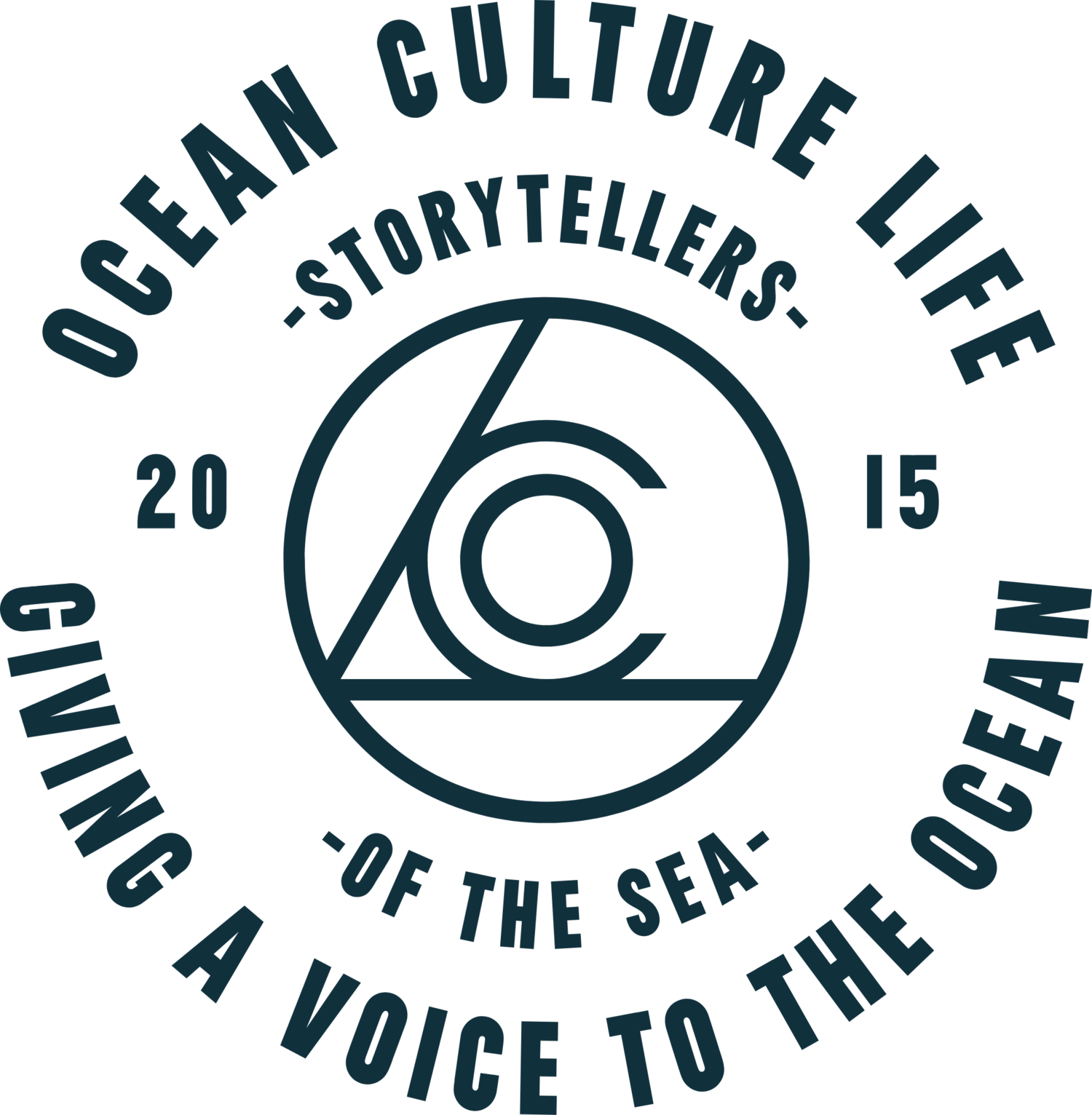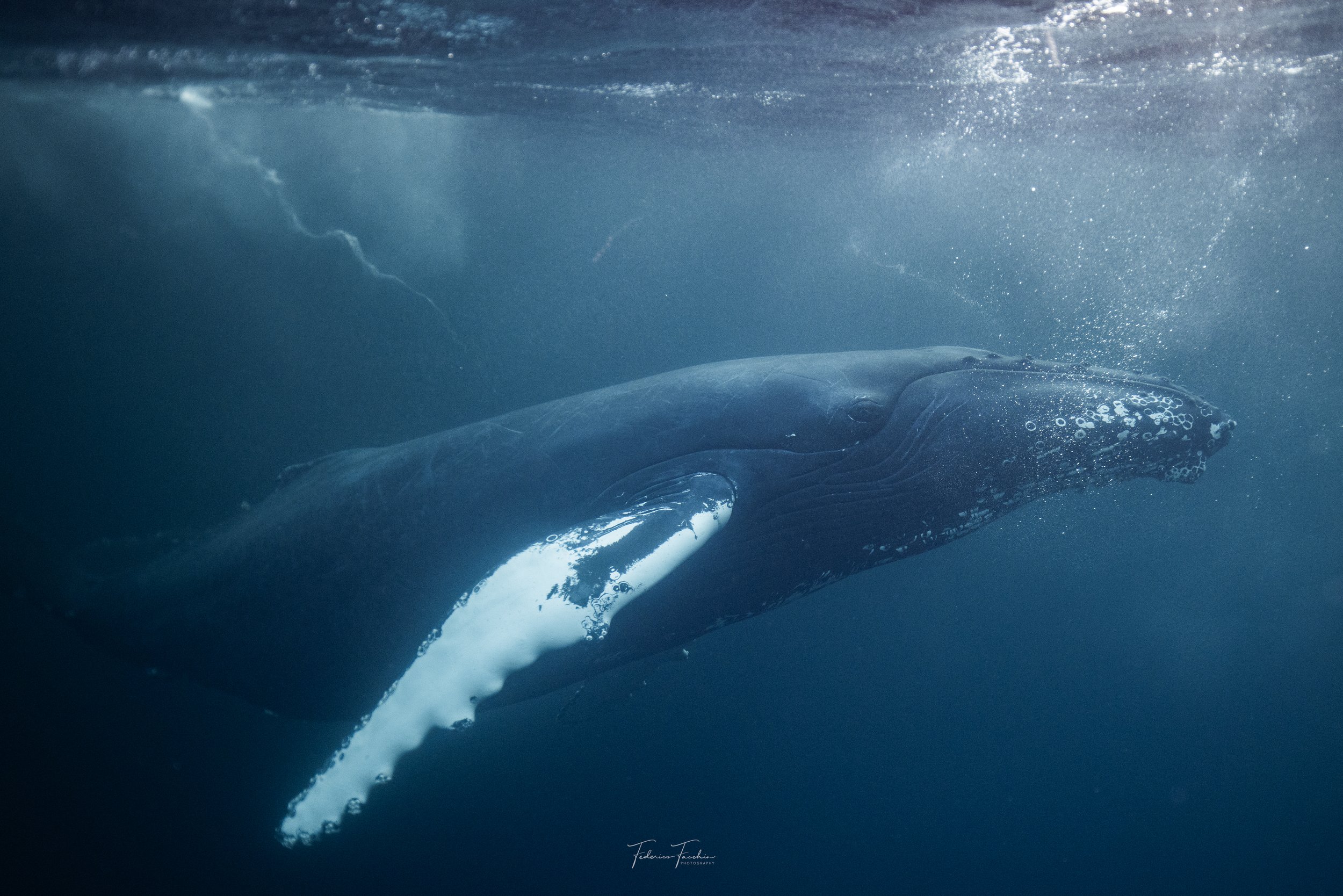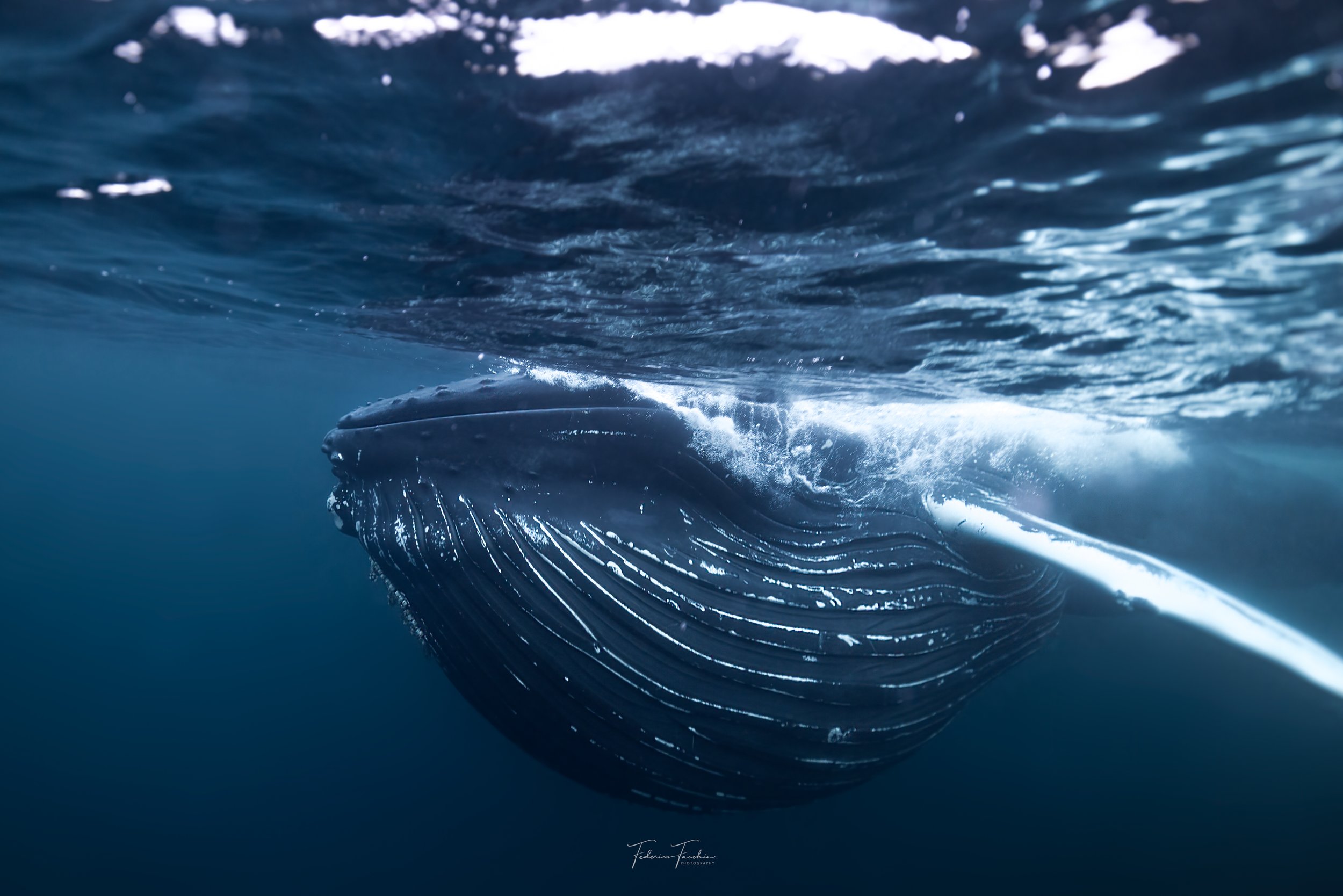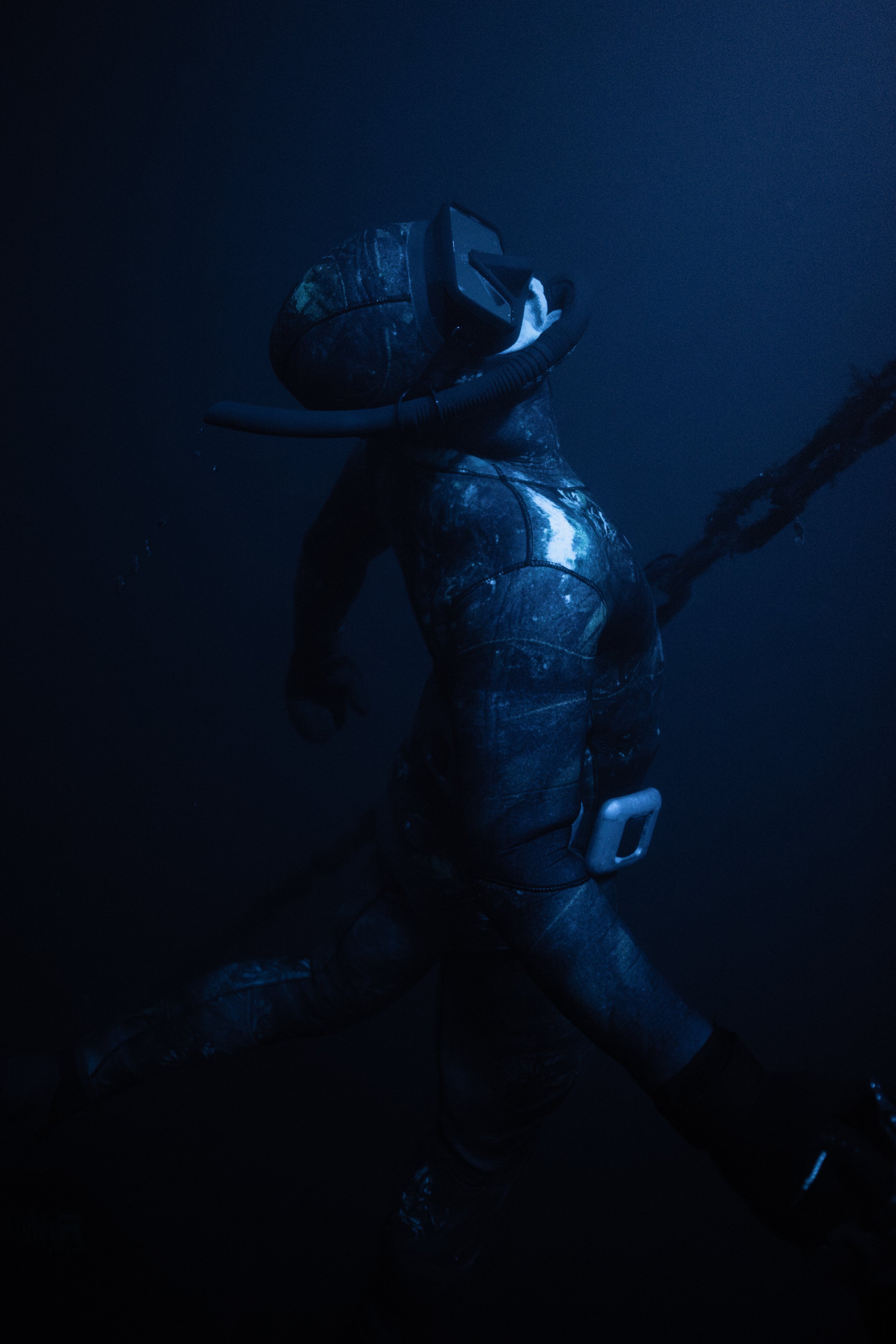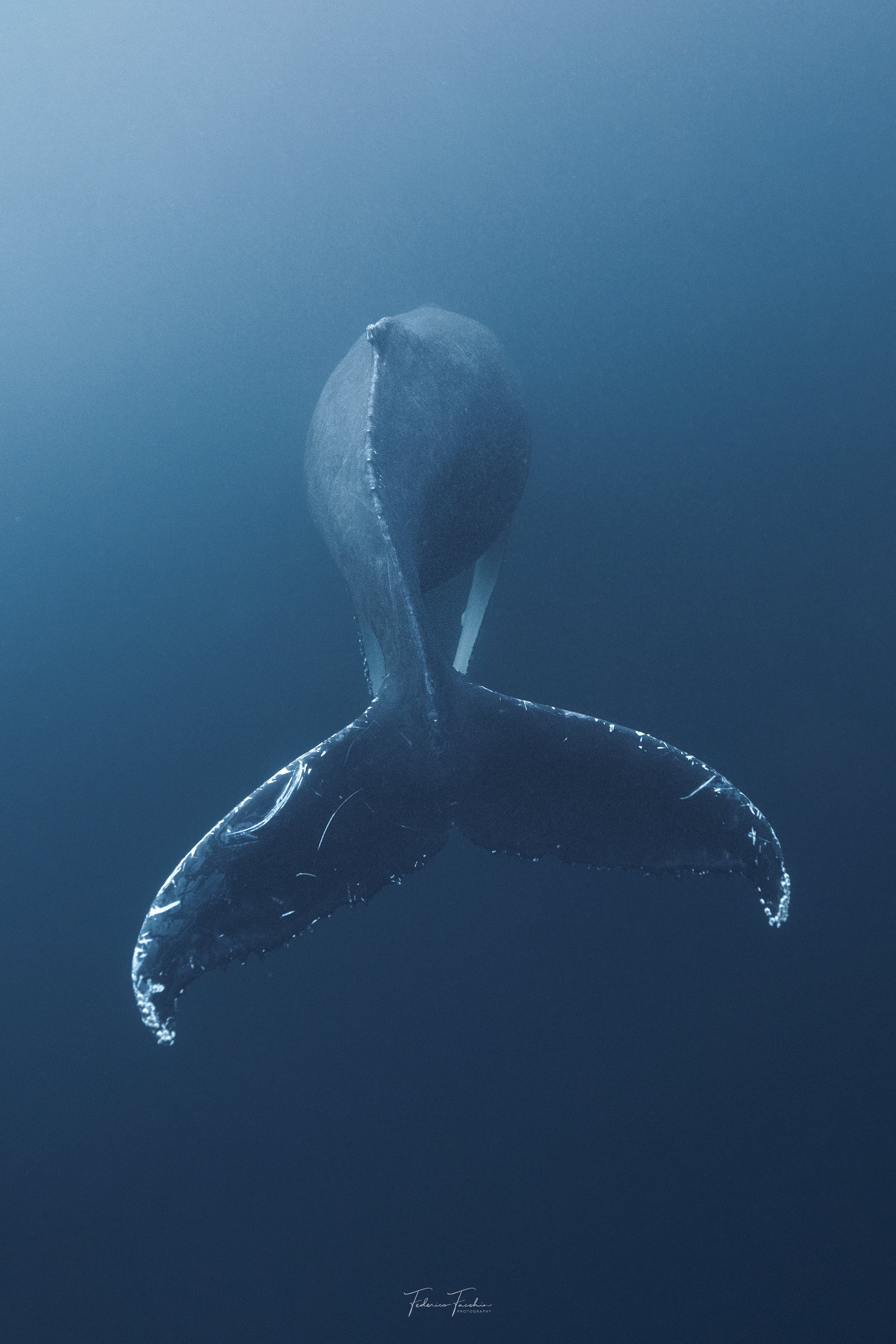FIN WHALE BY FEDERICO FACCHIN
MIGRATION
The biting cold air gently tickles my nose and forehead, the only parts of my body exposed to it.
The rest of me is well wrapped in a double layer of blankets, resembling a cocooned butterfly ready to emerge. It's nearly 8 am, yet outside remains shrouded in darkness, and the house is steeped in silence. I find myself comfortably lost in the arms of Morpheus, and I have absolutely no desire to leave my bed.
Until a few weeks ago, I awoke at sunrise to the (annoying) calls of tropical birds. I would gear up and cycle to work, ready to dive into the breathtaking coral gardens of the Australian Great Barrier Reef. Life was a blissful routine of flip-flops, Bermudas, and palm trees.
The alarm disrupts my peace, forcing me to crawl out of my cocoon. The thermometer mocks me with a chilly 12 degrees inside my bedroom and a bone- chilling -10 outside.
Not long ago, I was immersed in the warm embrace of 27-degree tropical waters, exploring the wonders of far North Queensland through snorkeling and diving. Now, I find myself above the Arctic Circle, doing the same job in waters that hover just above freezing temperatures.
Damn, what was I thinking?
THE ARCTIC KINGDOM
But there is a compelling reason to be here.
Over the past 6 to 7 years, the narrow fjords in front of Skjervøy have served as the captivating stage for one of nature's most impressive displays.
Skjervoy is a little village of fishermen, with not much happening on a regular basis, but in the last years, it has happened to be the final destination of the spring spawning herring migration.
Approximately three million tons of herring (Institute of Marine Research in Norway) seek refuge in these fjords during winter. This spectacular gathering lures an abundance of hungry whales.
The central figures of the season are the orcas, also known as killer whales. Estimates suggest that around a thousand orcas can be spotted in these fjords during this particular season (Norwegian Orca Survey). After the winter season, some will migrate back south as far as Oslo, while others will vanish into the middle of the Atlantic Ocean.
During this season, various other whales grace the fjords with their presence. Encounters with Humpbacks, whether solitary or in larger groups, are a common occurrence. Known and admired all over the world for their spectacular bareaches, formidable pectoral slams, and overall breathtaking performances, here their primary focus is on feeding, making them swift and challenging to catch even a fleeting glimpse.
You may come across Minke whales, the smallest of all baleen whales. I once had a remarkable encounter with them in Australia, where it's typical to see them interacting with boats and snorkelers. Unfortunately, in Norway, they are still hunted for their meat, so it's advised for them to steer clear of boats.
For those incredibly fortunate, there is even the possibility of spotting fin whales, the second-largest animals on Earth.
Also hunted, also elusive.
BAITBALL
Everyone who has spent enough time at sea knows what a bait ball is.
In all the oceans of the world, baitfish gather together in a defensive strategy aiming to confuse predators. Unfortunately, herrings here face two problems. The first one is the orcas, extremely smart animals capable of slapping the bait ball with their flukes, stunning the herring, and picking their prey one at a time. The second one would be the big whales, capable of swallowing a bait ball in one gulp. The day starts as usual: the ramp is frozen, the boat is frozen, and my fingers are frozen.
All normal, ready to go!
FEEDING
After sailing for an hour in search of a good spot for a plunge, the mood on the boat is not the best. Some people traveling here do not understand how cold it can be.
Even though it's not my first winter above the Arctic Circle, there are moments when cold and darkness challenge me as well, and I find myself questioning some of my poor life decisions.
We keep sailing in search of some signs of life. A flock of birds, for example, is a good indicator. Birds are excellent whale watchers, and there is always a good reason for them to gather. We approach our new avian friends, quickly getting ready with masks and fins. We get the green light from the captain, and we slowly slide from the side of the rib boat. Before we know it, we are floating in the cold and dark waters.
It takes a few seconds for our eyes to adapt, but our ears immediately start to pick up those magical sounds that, once heard, you’ll never forget.
Orcas are calling each other and gathering around the bait ball. They are coordinating their attacks to maximize their chances.
For now, I can't see them as the water is filled with particles. Herring scales are scattered everywhere, creating a momentary illusion of underwater snowfall. It looks like being inside a snow globe!
We keep kicking toward the position where we can see the dorsal fins surfacing and the birds diving. Finally, the big shadow of the bait ball starts to emerge in front of us, and a swarm of black and white ghosts trails behind them. A large group of orcas is feeding right in front of us, and we can only stay still and watch, completely caught in awe.
I've been in these situations before. These feeding events can last from 20 minutes up to several hours.
ONE GULP
However, today's spectacle is fleeting.
The bait ball is on the move, and it's challenging to keep pace. Falling behind, I decide to capture an image of the remnants of a herring. Orcas are known for selecting their prey meticulously, even going so far as to take fillets and spill out the rest. That's precisely what I'm attempting to document when, out of nowhere, something far more exciting emerges.
Emerging from the bait ball, a colossal 100-ton, 20-meter-long Fin whale commands attention, its mouth agape, propelling toward me.
Caught off guard, I'm ill-prepared for this unexpected spectacle. With a single breath, I free-dive a few meters to position myself for a better shot. What was, until a few seconds ago, a substantial bait ball is now just a memory, as the whale has claimed the majority of it.
As the whale's front glides past me, the end of its colossal body remains unseen, creating anticipation that stretches into what feels like an eternity. I anxiously await the majestic sweep of its fluke before surfacing for a much-needed breath.
A few seconds later, as my lungs start to ache for air, the fluke, resembling the size of a small plane, gracefully glides past me and gradually descends, fading into the darkness.
Article by Federico Facchin (@oceanic.fede) originally published at https://federicofacchin.com/fin-whale/
